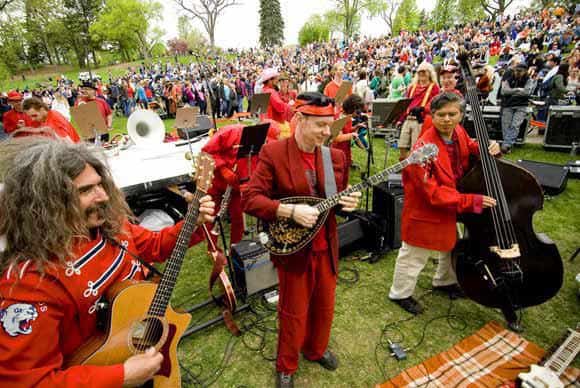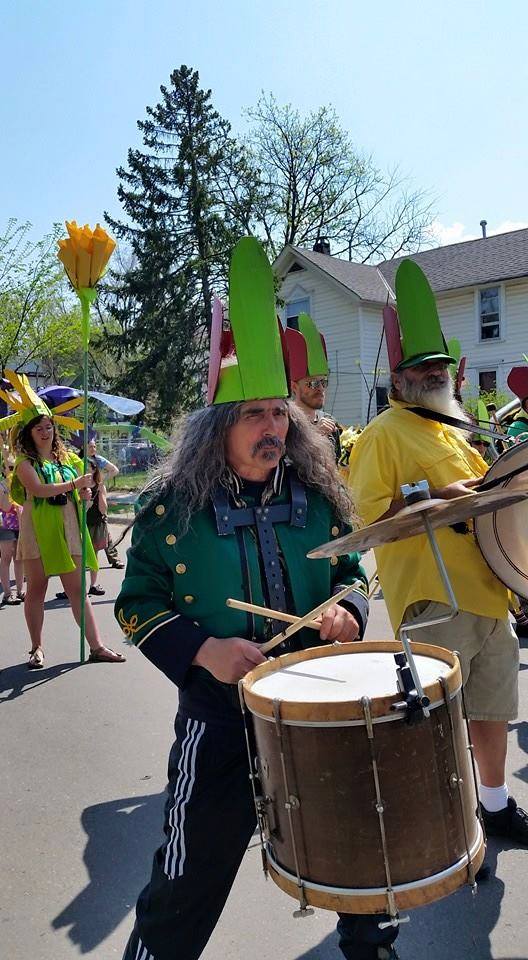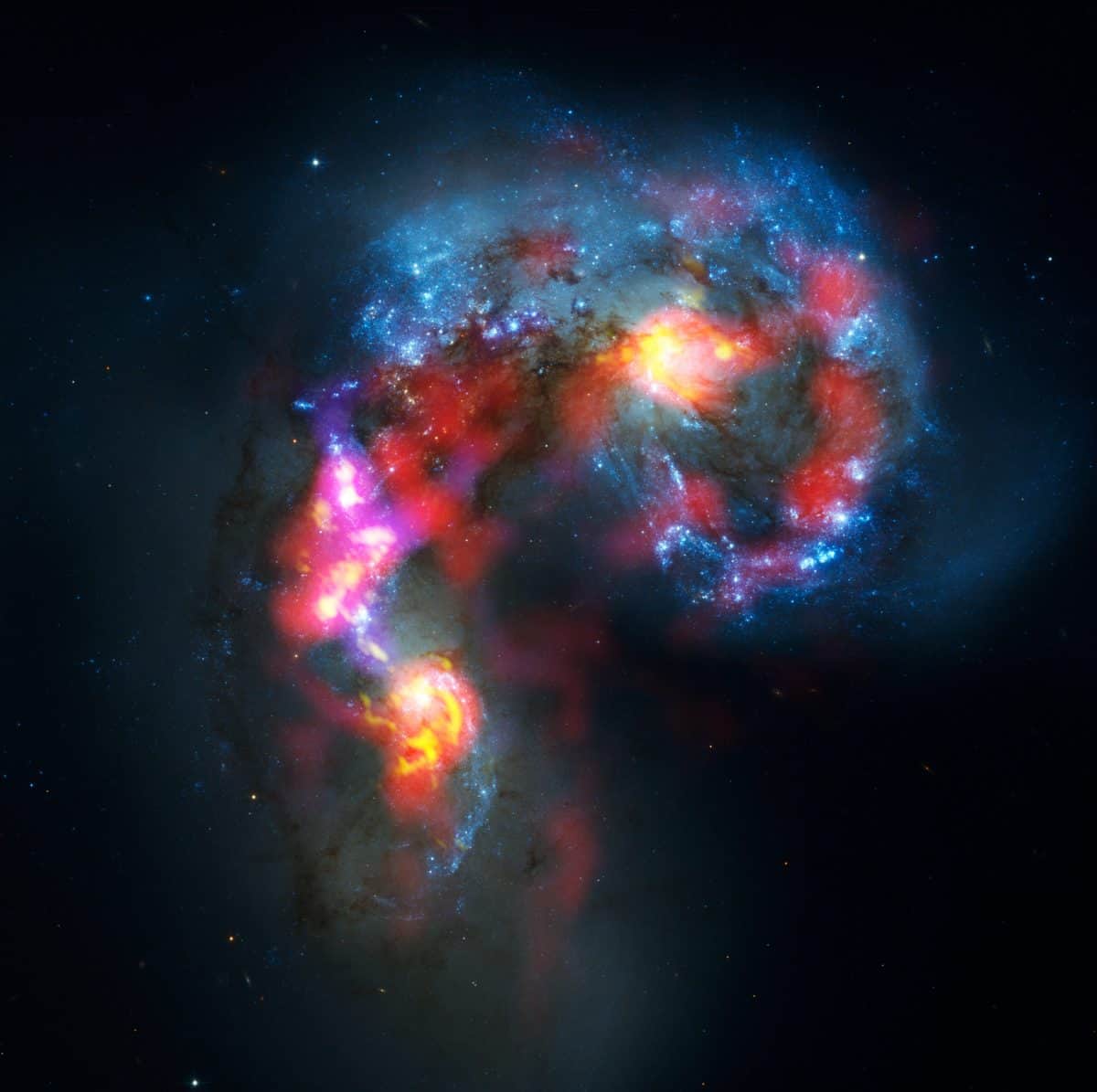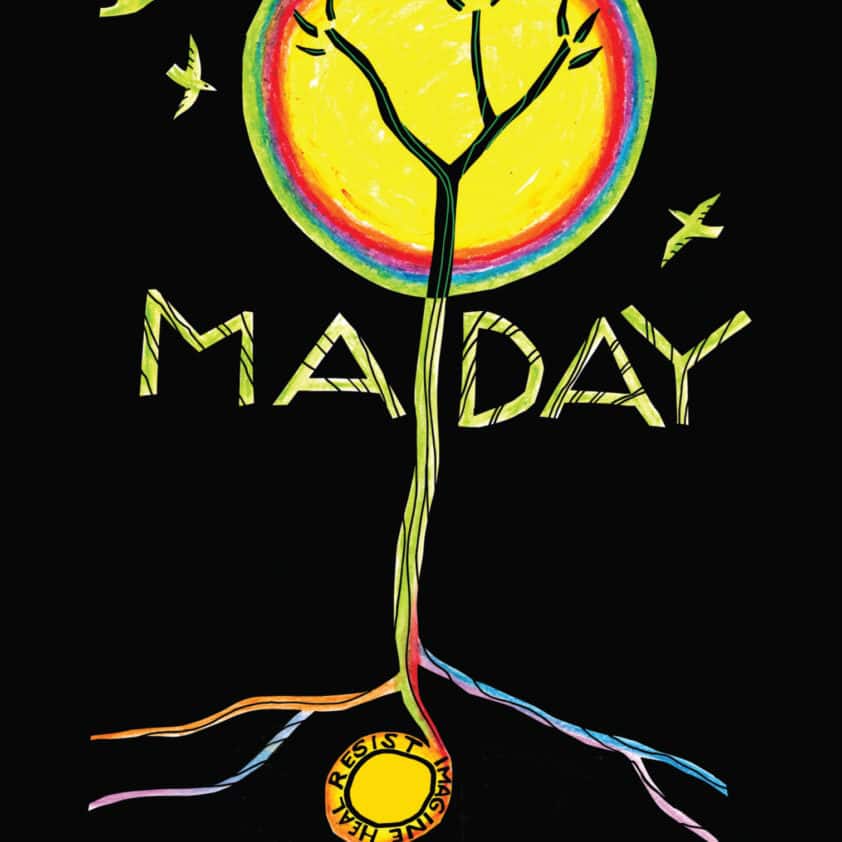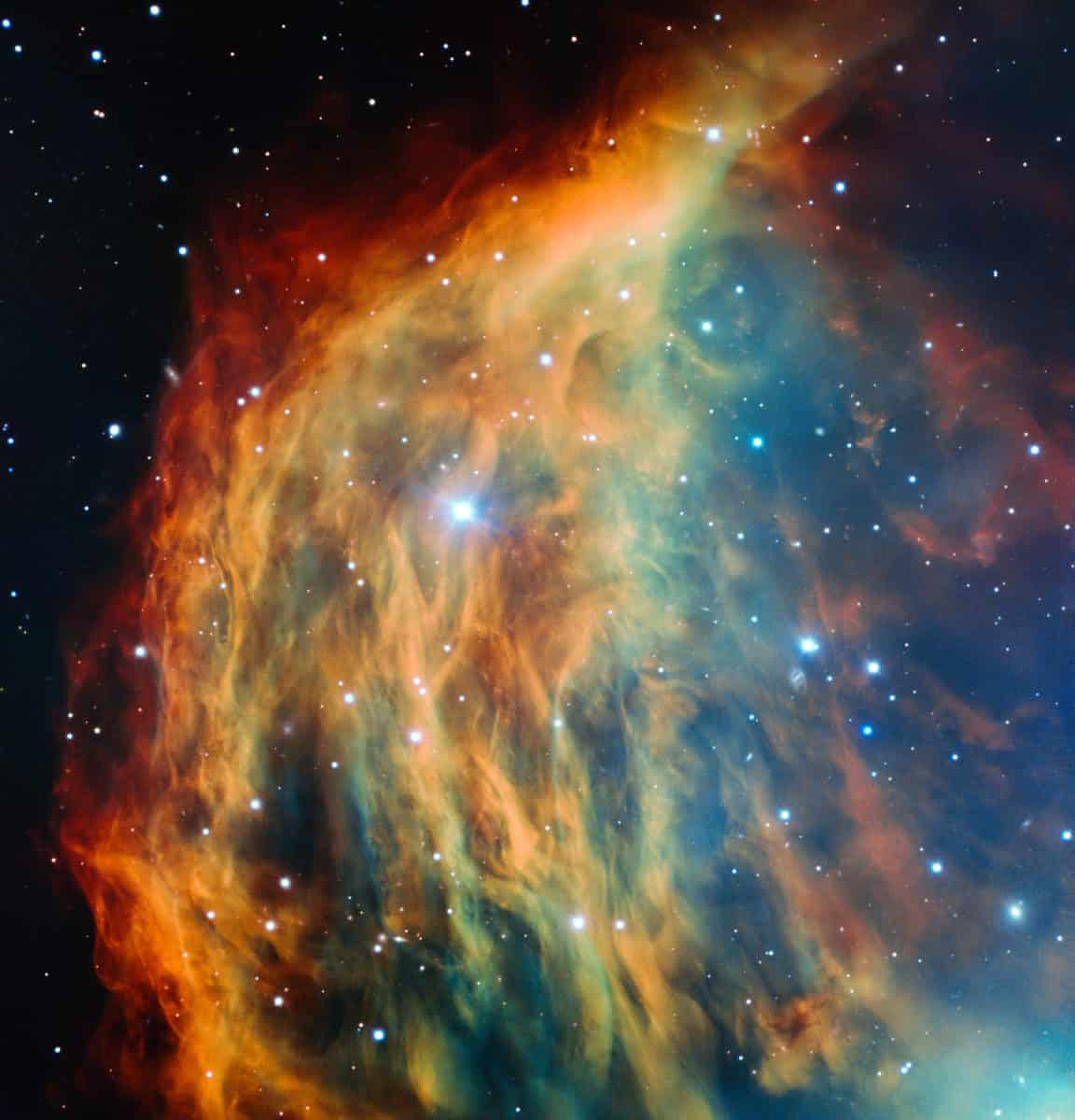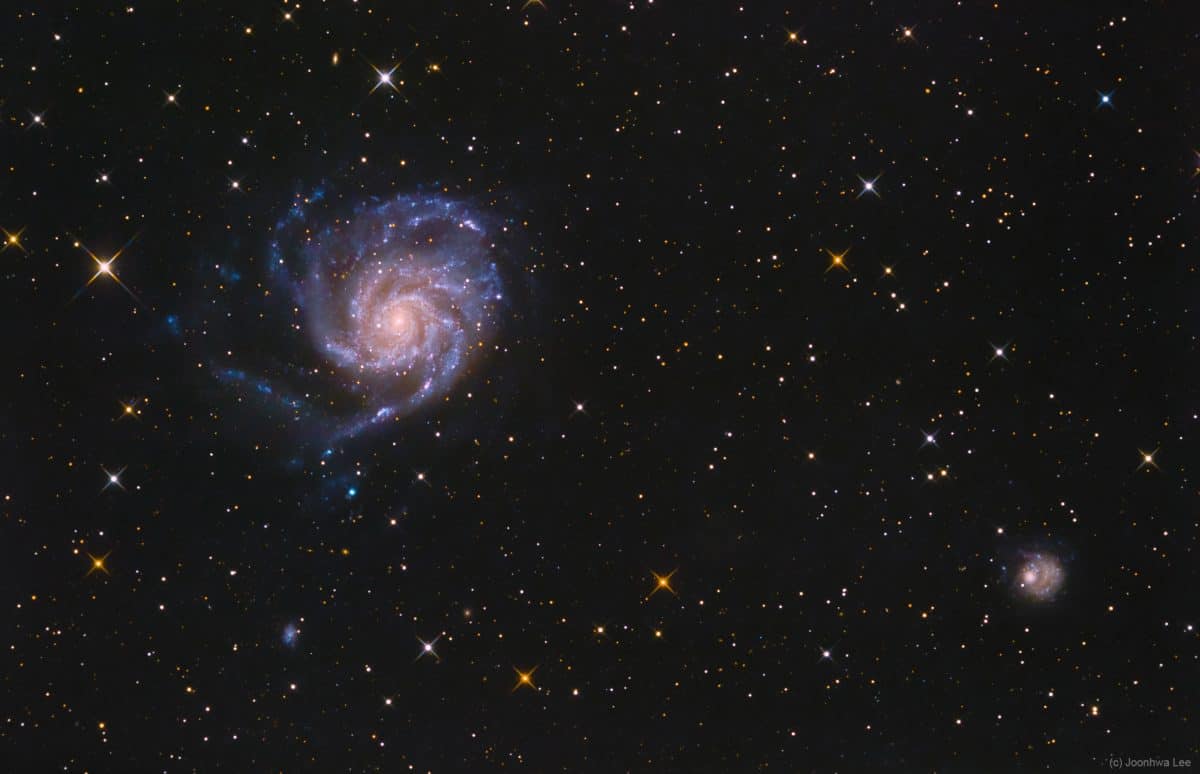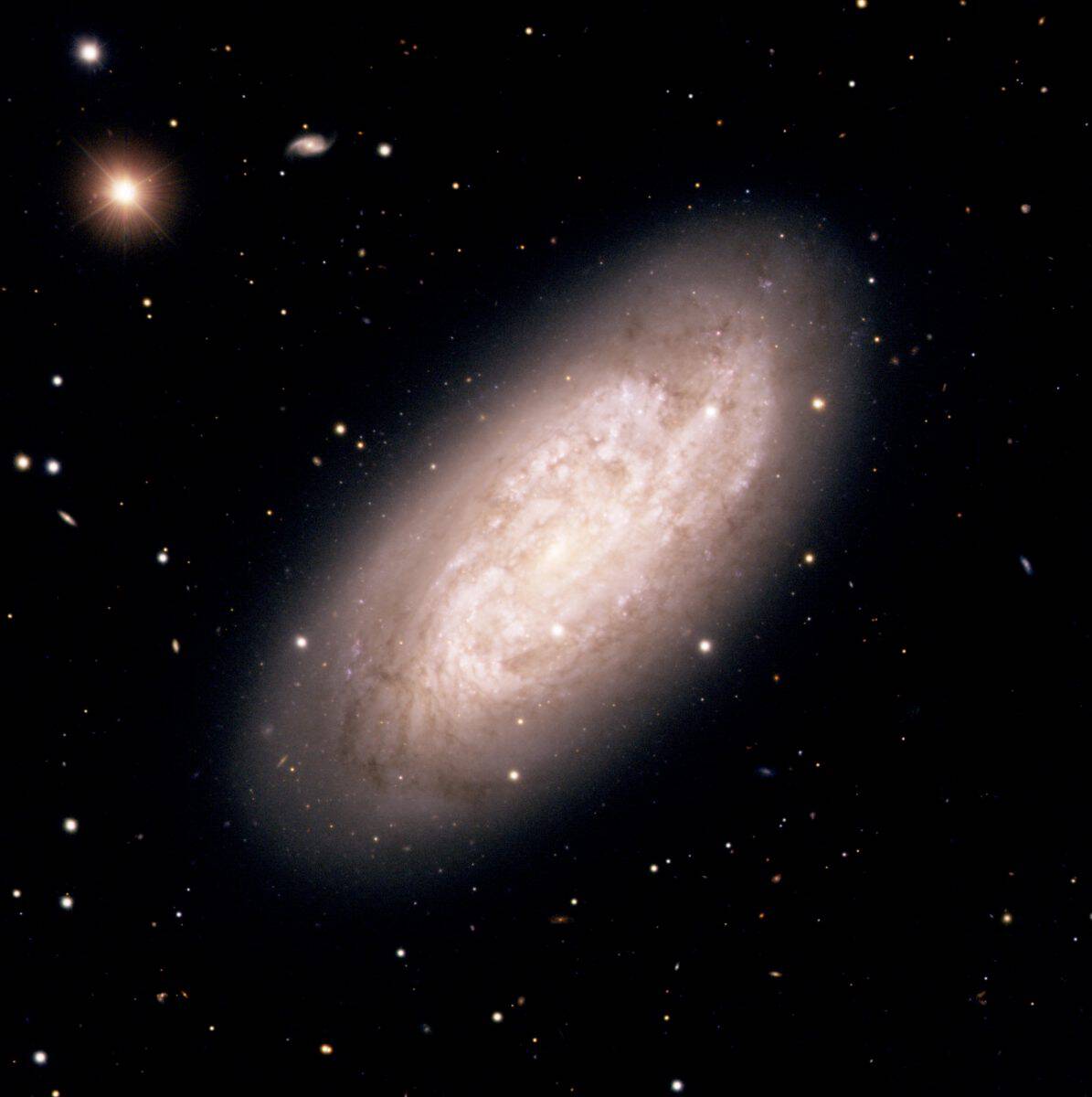Blog
In the Heart of the Beast Puppet and Mask Theatre’s 44th Annual MayDay Parade, Ceremony, and Festival
Sunday May 6th 2018 Minneapolis
Performing with the Community Band at noon 25th & Bloomington into Powderhorn Park.
Performing Misirlou, Shto Mi E Milo, Night Train, Caravan by Fanfare Ciocarlia and much more.
The Antennae Galaxies (also known as NGC 4038 and 4039) are a pair of distorted colliding spiral galaxies about 70 million light-years away, in the constellation of Corvus (The Crow). This view combines ALMA observations, made in two different wavelength ranges during the observatory’s early testing phase, with visible-light observations from the NASA/ESA Hubble Space Telescope.
The Hubble image is the sharpest view of this object ever taken and serves as the ultimate benchmark in terms of resolution. ALMA observes at much longer wavelengths which makes it much harder to obtain comparably sharp images. However, when the full ALMA array is completed its vision will be up to ten times sharper than Hubble.
Most of the ALMA test observations used to create this image were made using only twelve antennas working together — far fewer than will be used for the first science observations — and much closer together as well. Both of these factors make the new image just a taster of what is to come. As the observatory grows, the sharpness, speed, and quality of its observations will increase dramatically as more antennas become available and the array grows in size. This is nevertheless the best submillimetre-wavelength image ever taken of the Antennae Galaxies and opens a new window on the submillimetre Universe.
While visible light — shown here mainly in blue — reveals the newborn stars in the galaxies, ALMA’s view shows us something that cannot be seen at those wavelengths: the clouds of dense cold gas from which new stars form. The ALMA observations — shown here in red, pink and yellow — were made at specific wavelengths of millimetre and submillimetre light (ALMA bands 3 and 7), tuned to detect carbon monoxide molecules in the otherwise invisible hydrogen clouds, where new stars are forming.
Massive concentrations of gas are found not only in the hearts of the two galaxies but also in the chaotic region where they are colliding. Here, the total amount of gas is billions of times the mass of the Sun — a rich reservoir of material for future generations of stars. Observations like these will be vital in helping us understand how galaxy collisions can trigger the birth of new stars. This is just one example of how ALMA reveals parts of the Universe that cannot be seen with visible-light and infrared telescopes.
more...Eddie C. Campbell (born May 6, 1939 in Duncan, Mississippi) is an American blues guitarist and singer active in the Chicago blues scene.
Campbell moved to Chicago at the age of ten, and by age 12 was learning from the blues musicians Muddy Waters, Magic Sam, and Otis Rush. In his early years as a professional musician, he played as a sideman with Howlin’ Wolf, Little Walter, Little Johnny Taylor, and Jimmy Reed. In 1976, Willie Dixon hired him to play in the Chicago Blues All-Stars. Campbell’s debut album, King of the Jungle, featuring Carey Bell on harmonica and Lafayette Leake on piano, was released the next year.
more...David Friesen (born May 6, 1942) is an American jazz bassist born in Tacoma, Washington. He plays double bass and electric upright bass.
Friesen was an autodidact on bass, having picked it up while serving in the U.S. Army in Germany. He played with John Handy and Marian McPartland and following this, with Joe Henderson; in 1975, he toured in Europe with Billy Harper. His first album as a session leader appeared that year. In 1976, he began collaborating with guitarist John Stowell; the pair would work together often. He appeared with Ted Curson at the Monterey Jazz Festival in 1977. Following this, he worked with Ricky Ford, Duke Jordan, Mal Waldron, and Paul Horn. His 1989 album Other Times, Other Places reached No. 11 on the U.S. Billboard Top Jazz Albums chart. He has also played with Chick Corea, Michael Brecker, Stan Getz, Dexter Gordon, Kenny Garrett, Dizzy Gillespie, and Mal Waldron.
more...The song was first performed by the rebetiko Michalis Patrinos in Athens in 1927. As with almost all the early rebetika songs, the original composer of the song remained unknown, and the ensemble was enshrined in the head of the club. The melody was probably collectively composed by the musicians, as was often the case at that time, while the lyrics were almost certainly Patriot’s. In the original version of the song, the name of the title girl was suggested by Patinos “Mousourlou”, with heavy Smyrnian accent.
more...ESO’s Very Large Telescope in Chile has captured the most detailed image ever taken of the Medusa Nebula (also known Abell 21 and Sharpless 2-274). As the star at the heart of this nebula made its final transition into retirement, it shed its outer layers into space, forming this colourful cloud. The image foreshadows the final fate of the Sun, which will eventually also become an object of this kind.
The Medusa Nebula is a large planetary nebula in the constellation of Gemini on the Canis Minor border. It also known as Abell 21 and Sharpless 2-274. It was originally discovered in 1955 by UCLA astronomer George O. Abell, who classified it as an old planetary nebula. The braided serpentine filaments of glowing gas suggests the serpent hair of Medusa found in ancient Greek mythology.
Until the early 1970s, the Medusa was thought to be a supernova remnant. With the computation of expansion velocities and the thermal character of the radio emission, Soviet astronomers in 1971 concluded that it was most likely a planetary nebula.
As the nebula is so big, its surface brightness is very low, with surface magnitudes of between +15.99 and +25 reported. Because of this most websites recommend at least an 8-inch (200 mm) telescope with an [O III] filter to find this object although probably possible to image with smaller apertures.
more...Stanley Cowell (born May 5, 1941 Toledo, OH) is an American jazz pianist and co-founder of the Strata-East Records label. He played with Roland Kirk while studying at the Oberlin Conservatory of Music, and later with Marion Brown, Max Roach, Bobby Hutcherson, Clifford Jordan, Harold Land, Sonny Rollins and Stan Getz. Cowell played with trumpeter Charles Moore and others in the Detroit Artist’s Workshop Jazz Ensemble in 1965-66. During the late 1980s Cowell was part of a regular quartet led by J.J. Johnson. Cowell teaches in the Music Department of the Mason Gross School of the Arts at Rutgers, the State University of New Jersey.
more...Blind Willie McTell (born William Samuel McTier; May 5, 1898 – August 19, 1959) was a Piedmont blues and ragtime singer and guitarist. He played with a fluid, syncopated fingerstyle guitar technique, common among many exponents of Piedmont blues. Unlike his contemporaries, he came to use twelve-string guitars exclusively. McTell was also an adept slide guitarist, unusual among ragtime bluesmen. His vocal style, a smooth and often laid-back tenor, differed greatly from many of the harsher voices of Delta bluesmen such as Charley Patton. McTell performed in various musical styles, including blues, ragtime, religious music and hokum.
McTell was born in Thomson, Georgia. He learned to play the guitar in his early teens. He soon became a street performer in several Georgia cities, including Atlanta and Augusta, and first recorded in 1927 for Victor Records. He never produced a major hit record, but he had a prolific recording career with different labels and under different names in the 1920s and 1930s. In 1940, he was recorded by the folklorist John A. Lomax and Ruby Terrill Lomax for the folk song archive of the Library of Congress. He was active in the 1940s and 1950s, playing on the streets of Atlanta, often with his longtime associate Curley Weaver. Twice more he recorded professionally. His last recordings originated during an impromptu session recorded by an Atlanta record store owner in 1956. McTell died three years later, having suffered for years from diabetes and alcoholism. Despite his lack of commercial success, he was one of the few blues musicians of his generation who continued to actively play and record during the 1940s and 1950s. He did not live to see the American folk music revival, in which many other bluesmen were “rediscovered.
more...‘La noche de los Griots’
more...Small Axe
more...Big, beautiful spiral galaxy M101 is one of the last entries in Charles Messier’s famous catalog, but definitely not one of the least. About 170,000 light-years across, this galaxy is enormous, almost twice the size of our own Milky Way galaxy. M101 was also one of the original spiral nebulae observed by Lord Rosse’s large 19th century telescope, the Leviathan of Parsontown. M101 shares this modern telescopic field of view with spiky foreground stars within the Milky Way and a companion dwarf galaxy NGC 5474 (lower right). The colors of the Milky Way stars can also be found in the starlight from the large island universe. Its core is dominated by light from cool yellowish stars. Along its grand design spiral arms are the blue colors of hotter, young stars mixed with obscuring dust lanes and pinkish star forming regions. Also known as the Pinwheel Galaxy, M101 lies within the boundaries of the northern constellation Ursa Major, about 23 million light-years away. NGC 5474 has likely been distorted by its past gravitational interactions with the dominant M101.
more...
Dick Dale (born Richard Anthony Mansour on May 4, 1937) is an American surf rock guitarist, known as The King of the Surf Guitar. He pioneered the surf music style, drawing on Middle-Eastern music scales and experimenting with reverberation. He worked closely with Fender to produce custom made amplifiers, including the first-ever 100-watt guitar amplifier.He pushed the limits of electric amplification technology, helping to develop new equipment that was capable of producing distorted, “thick, clearly defined tones” at “previously undreamed-of volumes.” The “breakneck speed of his single-note staccato picking technique” and showmanship with the guitar is considered a precursor to heavy metal music, influencing guitarists such as Jimi Hendrix and Eddie Van Halen.
Dale was born Richard Anthony Mansour in Boston, Massachusetts, on May 4, 1937. He is of Lebanese descent from his father and Polish–Belarusiandescent from his mother.His parents farmed in Whitman, Massachusetts. Dale’s family moved to Quincy, Massachusetts, which had a significant Arab immigrant community, when Dale was very young. He learned to play music, starting with piano when he was nine. Dale admired Hank Williams—he wanted to be a cowboy singer—so he bought a plastic ukulele for $6 and taught himself to play by reading an instruction book. The first song he played on the ukulele was “Tennessee Waltz“.
more...Ronald Levin “Ron” Carter (born May 4, 1937) is an American jazz double bassist. His appearances on 2,221 recording sessions make him the most-recorded jazz bassist in history. Carter is also a cellist who has recorded numerous times on that instrument.
Some of his studio albums as a leader include: Blues Farm (1973); All Blues (1973); Spanish Blue (1974); Anything Goes (1975); Yellow & Green(1976); Pastels (1976); Piccolo (1977); Third Plane (1977); Peg Leg (1978); and A Song for You (1978).
He was a member of the Miles Davis Quintet in the early 1960s, which also included Herbie Hancock, Wayne Shorter and drummer Tony Williams. Carter joined Davis’s group in 1963, appearing on the album Seven Steps to Heaven and the follow-up E.S.P.. Carter also performed on some of Hancock, Williams and Shorter’s recordings during the sixties for Blue Note Records. He was a sideman on many Blue Note recordings of the era, playing with Sam Rivers, Freddie Hubbard, Duke Pearson, Lee Morgan, McCoy Tyner, Andrew Hill, Horace Silver and many others. He was elected to the Down Beat Jazz Hall of Fame in 2012. In 1993, he won a Grammy Award for Best Jazz Instrumental Group and another Grammy in 1998 for “an instrumental composition for the film” Round Midnight. In 2010 he was honored with France’s premier cultural award, the medallion and title of Commander of the Ordre des Arts et des Lettres.
Carter was born in Ferndale, Michigan. He started to play cello at the age of 10, but when his family moved to Detroit, he ran into difficulties performing on cello due to the racial stereotyping of classical musicians, the vast majority of whom were white at that time. Carter switched to playing double bass. He attended Cass Technical High School in Detroit, and, later, the Eastman School of Music in Rochester, New York, where he played in its Philharmonic Orchestra. He finished his bachelor’s degree at Eastman in 1959, and in 1961 a master’s degree in double bass performance from the Manhattan School of Music in New York City.
more...Sonny Payne (May 4, 1926 – January 29, 1979) was an American jazz drummer, best known for his work with Count Basie and Harry James.
Payne’s father was Wild Bill Davis‘s drummer Chris Columbus. After early study with Vic Berton, in 1944 Payne started playing professionally around New York with the Dud and Paul Bascomb band, Hot Lips Page, Earl Bostic (1945–1947), Tiny Grimes (between 1947 and 1950), and Lucille Dixon(1948).
From 1950 to 1953, Payne played with Erskine Hawkins‘ big band, and led his own band for two years, but in late December, 1954, he made his most significant move, joining Basie’s band for more than ten years of constant touring and recording. He was originally asked only to temporarily fill in for Basie’s ailing regular drummer, but Payne’s flashy style was such a hit that he was immediately hired to be Basie’s permanent drummer.
https://www.youtube.com/watch?v=FcYGz627GFk
more...World Music on Flamenco Fridays
With Spanish singer Diego El Cigala and Argentinian guitarist Juanjo Dominguez
more...NGC 1792 is a barred spiral galaxy, located about 43 million light-years away from Earth in the south-western corner of the small southern constellation of Columba (the Dove), while it is moving away from us at 1211 – 1222 kilometers per second.
Colour composite image of the starburst spiral galaxy NGC 1792 obtained with the FORS1 and FORS2 multi-mode instruments (at VLT MELIPAL and YEPUN, respectively). Its optical appearance of NGC 1792 is quite chaotic, due to the patchy distribution of dust throughout the disc of this galaxy. It is very rich in neutral hydrogen gas – fuel for the formation of new stars – and is indeed rapidly forming such stars. The galaxy is characterized by unusually luminous far-infrared radiation ; this is due to dust heated by young stars. Note the numerous background galaxies in this sky field. North is up and East is to the left.
more...
More Posts
- Daily Roots with Desmond Dekker
- The Cosmos with Arp 195
- Mick Jagger
- Charlie Persip
- Joanne Brackeen
- Erskine Hawkins
- World Fusion with Omar Sosa & Seckou Keita
- Daily Roots with the Slickers
- HAIR final performance 2021
- The Cosmos with the AR 2833 Solar Image
- Steve Goodman
- Don Ellis
- Semmangudi Srinivasa Iyer
- Johnny Hodges
- Daily Roots with Keith Rowe & Texas Dixon
- HAIR by Theatre 55 Caponi Park 7pm
- The Cosmos with MACSJ0138.0-2155
- Jon Faddis
- Charles McPherson
- Billy Taylor
